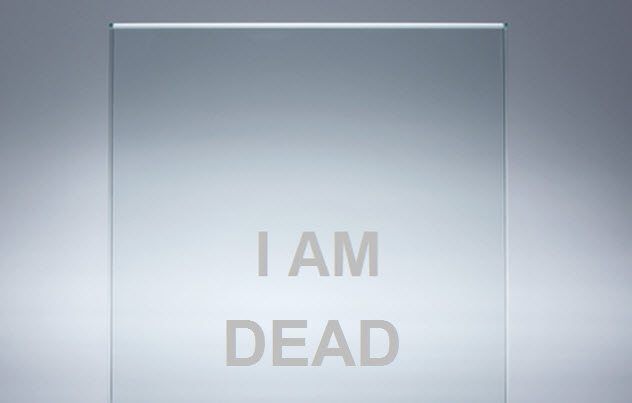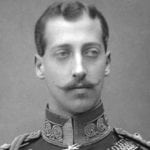 Weird Stuff
Weird Stuff  Weird Stuff
Weird Stuff  Our World
Our World 10 Ways Your Christmas Tree Is More Lit Than You Think
 Movies and TV
Movies and TV The 10 Coolest Stars to Set Sail on The Love Boat
 History
History 10 Things You Didn’t Know About the American National Anthem
 Technology
Technology Top 10 Everyday Tech Buzzwords That Hide a Darker Past
 Humans
Humans 10 Everyday Human Behaviors That Are Actually Survival Instincts
 Animals
Animals 10 Animals That Humiliated and Harmed Historical Leaders
 History
History 10 Most Influential Protests in Modern History
 Creepy
Creepy 10 More Representations of Death from Myth, Legend, and Folktale
 Technology
Technology 10 Scientific Breakthroughs of 2025 That’ll Change Everything
 Weird Stuff
Weird Stuff Ten Bizarre Facts About The Doge Meme
 Our World
Our World 10 Ways Your Christmas Tree Is More Lit Than You Think
 Movies and TV
Movies and TV The 10 Coolest Stars to Set Sail on The Love Boat
Who's Behind Listverse?

Jamie Frater
Head Editor
Jamie founded Listverse due to an insatiable desire to share fascinating, obscure, and bizarre facts. He has been a guest speaker on numerous national radio and television stations and is a five time published author.
More About Us History
History 10 Things You Didn’t Know About the American National Anthem
 Technology
Technology Top 10 Everyday Tech Buzzwords That Hide a Darker Past
 Humans
Humans 10 Everyday Human Behaviors That Are Actually Survival Instincts
 Animals
Animals 10 Animals That Humiliated and Harmed Historical Leaders
 History
History 10 Most Influential Protests in Modern History
 Creepy
Creepy 10 More Representations of Death from Myth, Legend, and Folktale
 Technology
Technology 10 Scientific Breakthroughs of 2025 That’ll Change Everything
10 Methods Used To Prevent Being Buried Alive
The idea of being buried alive has frightened humankind for thousands of years and, as Edgar Allan Poe well knew, fell right into the realm of nightmares. While the idea plagued our distant ancestors, it also terrified our more recent Victorian predecessors who formed societies to prevent being buried alive.
As these societies began to speak out about the dangers of being buried alive, medical doctors began to devote more time to uncovering the symptoms of death. They also started to inspect the bodies of the deceased, something they had neglected to do in the past when they often signed death certificates through word of mouth alone.
10 Severed Artery

Strange will requests were once the subject of the public’s fascination. Any odd request would often make its way into the newspapers across the world, igniting the readers’ curiosity.
For example, in 1932, the London Evening News published a few of the instructions left in the will of a restaurant owner. While most of the requests seemed about average, there was the curious fact that he was afraid of being buried alive. To quell his own fears, he requested that an artery be severed before his burial and that a certificate of true death be issued by the Association for the Prevention of Premature Burial.[1]
By making certain that he was very much dead before being buried, he was able to forego the expense of the installation of a bell in case he woke up inside his coffin.
Writer Hans Christian Andersen also had a severe fear of being buried alive. In fact, whenever he stayed in a hotel, he placed a card on the dressing table declaring, “I am not really dead.”
Before Andersen died, he asked his friends to make sure that his arteries were cut open before he was buried.
9 The Old Fingernail Test

Men were not the only ones who were worried about being buried alive. Plenty of women in the early 20th century had read the newspaper stories and heard the rumors of people being buried alive. In those cases, after a coffin was opened, it was discovered that the person within had tried to claw his or her way out after being interred a bit too soon.[2]
Miss Ruby Caroline Aykroyd of London made a request in her will in 1924 that she wanted the fingernail test performed on her corpse after her death. This test simply involved holding a lighted match or candle under the fingernails until they burned. It was believed that if the person was truly alive, he or she would react to the pain.
Having her nails burned after death was only the first step to Miss Ruby’s final end. She also requested that she be cremated and her ashes scattered to the winds.
Interestingly enough, it was during this time that cremation was regaining popularity in the European countries and in the United States. It was one way that people could make sure that they would never wake up inside a narrow box 2 meters (6 ft) underground.
8 Decapitation

James Mott wanted to make sure that there was no chance of being buried alive, so he left very detailed instructions in his will back in 1927. As stated by the man from Birmingham, England, two doctors had to examine his deceased body and prove through various tests that he was indeed dead. After that, he instructed the doctors to place prussic acid in his mouth.
After the poison was placed in his mouth, there were two options. The first was that he wished to be decapitated before burial. If the doctors did not wish to cut off his head, they had the second option of dissecting his remains.[3]
When his meat was thoroughly chopped and there was no hope of ever returning to life, he wanted his remains to be placed in a sack and dumped into the sea. He requested that he not be placed in any sort of wood or metal box.
Of course, if this proved impractical, he asked that his remains be placed in a sack and simply cremated. His ashes could be scattered to the winds.
Another case of decapitation was published in 1905. In that case, a Dr. Hadwen honored a patient’s request and cut off her head after it was determined that she was dead.
In Newton, Massachusetts, Charles Albert Reed also requested that his head be severed from his body after death. To make certain the deed was done, he left $500 in his will to pay his attending physician for the decapitation.
7 Secret Message

Throughout the centuries, people have come up with numerous ways to prove that the dead were truly dead and not in some deep state of trance. Perhaps one of the most unusual methods for deciding whether a person was truly dead was practiced in 1790 in England.
First, the corpse was laid on a slab or placed inside an open box. Next, a glass pane was placed over the body. On the underside of the glass was written “I am dead” in silver nitrate.[4]
The message was invisible until the corpse began the process of decomposition and released hydrogen sulfide gas. Only then could the death message be read, and it would be known that the body was ready to be placed in the earth.
6 Respiratory Tests

In a medical book published in 1850, the writer gave a list of respiratory tests he performed to determine if the subject was deceased or not.
The first test was a mirror test. This involved holding a cold pocket mirror over the opened mouth and nose of the patient. This was held in place for anywhere from 30 seconds to one hour. If there was any breathing, moisture would form on the mirror.
The second test was the feather test. To perform the feather test, a feather was held near the mouth and nose. If there was any breathing, it would make the feather tremble.
Finally, there was the water or mercury test. A glass was filled with either water or mercury and placed on the body’s chest. Any slight motion from the diaphragm could be seen using this method, or so doctors believed.
Sadly enough, none of these old methods for seeking out signs of life was foolproof and none was 100 percent accurate.[5]
5 That Prick

Pin pricking was a common method for determining death from the 1800s to the early 1900s. At one time, it was believed that if a living body was pricked by a pin, the hole would turn red and then close up. A dead person’s pin poke would remain an open hole.
As to where the poking took place, the fingers and the soles of the feet were the most common areas to test for a living reaction. Sometimes, a pin was inserted under a fingernail because, surely, no living person could remain unconscious through such a painful procedure.
Lady Burton, the wife of Captain Sir Richard Burton, requested that her heart be pierced with a pin to make sure she was dead. Afterward, she wanted her body to be dissected and then embalmed.[6]
Mrs. Elizabeth Thomas made a similar request to her physician. Upon her death, he took a long pin and inserted it into her heart, ensuring that she was truly deceased.
4 Have A Heart

What better way to make sure you are dead than to have your heart removed. Although gruesome, that was a favorite way to prevent premature burial among the upper classes. It was surprising that many personal physicians and surgeons agreed to perform the procedure.[7]
Francis Douce, an English antiquarian, died in 1834. In his will, he left his surgeon 200 guineas to remove his heart after death. A friend of Douce asked the same of his physician. The only difference between the two requests was that the friend demanded that his son witness the heart removal.
Interestingly enough, a former president of the Hahnemann Medical College of Philadelphia had requested that his heart be removed before burial, proving that even those in the medical profession had doubts about doctors’ abilities to determine if someone was truly dead.
William Shackwell skipped the part about having his heart removed. Instead, in his will, he requested that his physician cut off each of his fingers and toes before being buried. He figured that if there was any chance of him still being alive, he would somehow react to the pain or, at the very least, bleed out before ever waking again.
3 A Quick Injection

An injection of a poisonous substance was one method that doctors used upon those they thought were dead back in 1895.
One medical doctor advocated for the injection of strychnine into a corpse before burial. That way, if the body was not yet deceased, at least it would not wake up inside a coffin.
For another doctor, the poison of choice was morphine. That way, if the respiratory and circulatory systems were not fully stopped, they would be after a strong injection.
This tied in with the practice of euthanasia, something that was rarely discussed in the late 1800s. But it was quietly practiced in the most desperate cases involving incurable diseases that made the body linger in a near-state of death.[8]
2 Chloroform

In 1898, it was proposed by one of the many societies created to prevent live burials that if a person did not get autopsied, embalmed, or cremated after death, his next best option might be chloroform.
It was openly suggested that a bottle of chloroform be placed inside the casket with the deceased. In one account, it was stated that the bottle of chloroform should be open so that it would be impossible for a person to wake up after being buried.[9]
Of course, this was never proven to be an effective measure for the prevention of premature burial.
1 Waiting For Decay

Perhaps the most common method to preventing premature burial was to simply wait until the supposed dead person showed signs of decay. In the early 1800s, it was common practice to bury poor people as quickly as possible because it was believed that they were infested with vermin and disease.
The lousy disease was an often cited reason for burying the poor well before they had gone cold because doctors believed that there were worms living in skin tumors and, if not buried immediately, the worms would break through the skin and find new hosts.
In 1898, the New York legislature considered a bill to enforce the use of mortuaries. The dead could be placed there until such time as it was confirmed that they were truly dead. Obvious signs of decay had to be witnessed, such as mucus covering the eyes of the deceased, before the body was officially declared dead and ready for burial.[10]
Other death tests conducted in the mortuary were to include the cutting of an artery to make certain that no blood was flowing and holding the fingers of the deceased over a candle flame to see if there was any reaction to pain.
By 1905, England was also considering a bill that would require using mortuaries for the dead in both England and Wales. There, the dead could rest until putrefaction set in.
Elizabeth lives in the beautiful state of Massachusetts where she is currently involved in researching early American history. She writes and travels in her spare time.
Read more creepy stories about people who were buried alive on 10 Horrifying Stories Of People Who Were Buried Alive and 10 People Who Survived Being Buried Alive.








